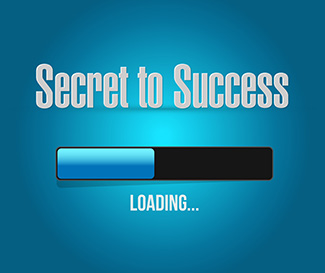Business failure is never the goal of any start-up. But businesses do fail. One reason businesses fail is because business owners often ignore common symptoms of trouble and don’t reach out for help. Common symptoms of trouble include:
- Cash flow issues – feast-or-famine cycles
- Lack of owner’s pay
- Inability to deliver goods or services at a level that creates positive customer experiences
- Stress and overwhelm experienced by the owner
- Working harder and longer with nothing to show for it
- Great sales/revenue with no profit to show for it
I see these issues often. They’re the reason my phone rings. But these symptoms are the result of deeper problems. If you’re experiencing any of the above, your business isn’t as healthy as it could be! And if you’re just hoping, waiting for a miracle, and trying to stay optimistic about the state of your  business and business finances, you may be headed for trouble.
business and business finances, you may be headed for trouble.
Don’t get me wrong, optimism is a good thing. But false optimism (also known as denial) isn’t. The only way to fix the symptoms listed above is to face the underlying causes.
It’s worth taking the time to do. There is a point at which a business can’t be saved. If the situation gets to that point, your dream, that dream, could be over.
A Cautionary Tale of Business Failure
Recently, a friend contacted me about her son-in-law. He’s a smart, hard-working, 34-year-old business owner, husband and father of two. He started his business eight years ago. Now his dream and his once-promising business are crumbling around him.
His story is a cautionary tale. It’s a good example of how smarts, a great idea, and hard work don’t necessarily guarantee business survival. In fact, business survival isn’t even a consideration for him at this point. Right now, he’s just trying to figure out how to close the business and move on to something that will support his family and get them back on track.
Getting back on track isn’t going to be easy, however. He hasn’t been able to pull owner’s pay to cover his family’s personal expenses for over six months, and they’re at risk of losing their home to foreclosure. He’s losing the space he uses for his business, due to inability to pay the rent. He’s in default on a business loan for over 200k. Their credit is shot and he’s facing personal and business bankruptcy. And unfortunately, he’s unable to sell any business assets to bring some money in – for various reasons. The current situation is in full-on crisis mode and I’m sorry to say that even I can’t save this one.
So, how did he get here? Eight years ago, he started a promising business with a great idea the market needed, lots of deposits for orders, tons of ambition, and a strong work ethic. How did it all come crashing down?
In going over the details with my friend, a few things became clear. First, he’s a great man who loves his family, is a hard worker, and never intended to fail. He just never had a plan. He also made a lot of common mistakes. And though you might be shaking your head and judging that this could never happen to you, you’d be surprised at how many businesses fail due to those common pitfalls and the business owner’s failure to plan.
Key Factors to Business Failure
We could talk about a lot of things when it comes to business failure. Lack of adequate capital, inaccurate pricing of goods or services, lack of support, owner weaknesses that aren’t addressed, lack of systems and processes, and ‘casual glance accounting’ for money management are typically the underlying issues discussed as reasons businesses fail. And, YES, they’re all important factors that lead to problems! But what do they all circle around? They all circle around the business owner and how they structure and run their business.
 In a 2014 article, Gallup cited research which found the success of a new business has a lot to do with the person starting that business. And in a 2014 Entrepreneur.com article, Gallup researcher Sangeeta Bharadwaj Badal outlined nine blind spots that sabotage businesses – all related to a business owner’s unique traits and weaknesses. It makes sense if you think about it. All those common symptoms of a problem I mentioned above can pop up because of an owner’s personality traits, decisions, actions, and experience – or lack of experience.
In a 2014 article, Gallup cited research which found the success of a new business has a lot to do with the person starting that business. And in a 2014 Entrepreneur.com article, Gallup researcher Sangeeta Bharadwaj Badal outlined nine blind spots that sabotage businesses – all related to a business owner’s unique traits and weaknesses. It makes sense if you think about it. All those common symptoms of a problem I mentioned above can pop up because of an owner’s personality traits, decisions, actions, and experience – or lack of experience.
For example, if you have a business owner who doesn’t like planning or details and prefers to just jump in and ‘fly by the seat of their pants,’ those common issues are more likely to occur and become a BIG problem that jeopardizes business survival!
In the case of my friend’s son-in-law, he was definitely a dive in and ‘fly by the seat of his pants’ type of entrepreneur. He struggled with prioritizing and staying focused on tasks and projects that paid, which meant he often missed the promised deadline and disappointed customers. It also meant projects took longer to complete, so it limited the amount of revenue he could produce each month substantially.
He wasn’t the type who liked the administrative/detail side of the business and resisted the systems and processes that would’ve made his life a whole lot easier – and his business more efficient. And, though he manufactured a product that required extra hands to complete, he was a one-man operation trying to do everything himself.
He also didn’t have a system to manage the revenue coming in. This caused a great deal of stress – both at home and at work – as he experienced extreme cycles of feast-or-famine. He never knew for sure what was going out or coming in and used the ‘casual glance’ method of accounting. If he needed to pay himself or someone else, he would take a glance at the account and see if there was money there, then write a check if there was. He didn’t, however, take into consideration what else might need to come out of the account, which often left him with shortages.
Money and cash flow problems also popped up because he thought he was charging enough for the product he was producing, but he didn’t really know how much it cost him to produce and deliver that product. He was overly optimistic about how much time each project took. And he didn’t use the right calculations to factor in all the overhead. This meant he was actually breaking even or losing money on many of the items he sold. But he had no idea.
Add in an emergency surgery in 2016, which left him unable to do his job for six months, and his already shaky business started to cave in. He quickly got behind on orders and loan payments, which sent him spiraling down the rabbit hole.
He had no capital or cushion to get him and his family through. And he was a one-man show who kept it all in his head and wore all the hats. When he was out recovering from surgery, the business basically came to a screeching halt. Nobody was there to keep it all afloat. By the time he was able to get up and running again, he was so deep in the hole there was no coming back.
Minimizing the Risk of Business Failure
I know the details of this story may not fit with your specific situation. So, why did I share it?
I wanted to share his story because, even though the details of your business may be very different, the principles of creating an environment that sets the stage for business success are the same – no matter what type of business you have. And it really highlights how much the business owner’s decisions, actions, and weaknesses influence outcome.
As a business owner, only you can give your business the best chance of success. It’s so important to dig into (and be honest about) who you are as a business owner. Then you can put a plan together for your business.
For the best possible shot at minimizing the risk of business failure, your plan should include those elements mentioned above. Here’s a quick run down…
Adequate capital and/or lines of credit
You should have a cushion for that year you’re starting your business and reserves for unexpected life emergencies – like surgeries or health issues – that sideline you. Lines of credit can also ensure you have the money you need for inventory, supplies, and necessary purchases, so you can complete the jobs you take on. But it’s even better if you have a system for managing your revenue that gives you a supply of cash on hand to cover those things too.
Focusing on the RIGHT things
 There’s a big difference between being busy and being profitably productive. You could easily spend an entire day – or even weeks – working in your business with nothing to show for it at the end. Identify and prioritize the activities in your business that actually bring in revenue. If you’re spending too much time on tasks that don’t, your time isn’t being used efficiently and you’re setting yourself up for those feast-or-famine cycles.
There’s a big difference between being busy and being profitably productive. You could easily spend an entire day – or even weeks – working in your business with nothing to show for it at the end. Identify and prioritize the activities in your business that actually bring in revenue. If you’re spending too much time on tasks that don’t, your time isn’t being used efficiently and you’re setting yourself up for those feast-or-famine cycles.
Accurately pricing goods and services with profit in mind
There are specific calculations involved in determining what the price needs to be for you to make a profit! It’s easy to overlook costs that should be included and get that number wrong, which can leave you actually losing money on every transaction! It’s also easy to be overly optimistic about how much time goes into each project. So, take the time to think through EVERYTHING that needs to be included in that calculation.
Support
This could be a business coach, a partner who has the strengths and skills that ‘fill in the gaps’ of your weaknesses and can step in if you have an emergency of some kind, a virtual assistant who will deal with the dreaded details, employees who assist in production, a bookkeeper, or marketing person. You get the idea. Figure out what specific people will ‘round out’ your skill set and keep things running smoothly… and bring them on board!
Identifying your strengths and weaknesses
We all have strengths and weaknesses, but awareness is key. Figure out what yours are and embrace them – the good and the bad! If you don’t, how can you make your business as strong as it can be? Business survival depends on maximizing the strengths and having a plan to compensate for the weaknesses. This goes back to putting the right support in place too. If you don’t consider yourself an organized/detail person, all those administrative tasks can overwhelm you. Usually, that means owners avoid doing them, which isn’t good!
Get a system and a plan for money management
If you use the ‘casual glance’ system of accounting, stop it now! It’s ineffective, it creates cycles of feast and famine, and it sucks the profit right out of your business. There are much better ways to manage that precious resource that represents your hours of hard work!
Put systems and processes in place early and everywhere you can
No one can keep everything straight in their head, especially when you have a business that involves a lot of projects and/or steps to complete projects. Things will inevitably fall through the cracks! And if you don’t have systems and processes in place for running your business, you make it impossible for anyone else to step in and help effectively.
through the cracks! And if you don’t have systems and processes in place for running your business, you make it impossible for anyone else to step in and help effectively.
Having all these things in place would’ve created a very different story for my friend’s son-in-law. The road to learning from his business failure will be long for him. And it may be years before they fully recover. Yes, we can (and should) learn from failures. But I’m sure he wishes he was writing the story of his success rather than the postmortem of lessons learned.
I am a firm believer that business success is possible if you take the time to arm yourself with the knowledge you need to succeed. We, as business owners, need to understand our strengths and weaknesses, as well as the elements needed to increase our chances of surviving and thriving. Even if you don’t start out with knowledge and a great plan, you can still pull everything together when you realize those symptoms of a problem are present. Just don’t let false optimism keep you from addressing the issues! The sooner you seek answers, the better the chance business failure won’t be your future. You’ll sleep better too!


